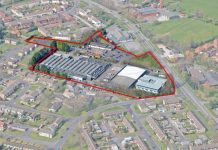The march of the flexible workspace is evolving and is set to further penetrate the office market says real estate advisor Cushman & Wakefield, in a new report, Coworking 2019: The UK Flexible Evolution Continues.
Despite political headwinds, flexible workspace operators let more than 1.2 million sq ft of space across 40 transactions in Central London during H1. If letting activity progresses at the same rate for the remainder of 2019, Cushman & Wakefield predicts flexible workspace take-up to exceed two million sq ft for a third successive year.
In the major regional markets, take-up of traditional office space by flexible workspace providers has grown significantly in the last few years. Almost 800,000 sq ft of new space across the major regional markets was acquired by flexible operators in 2017 and 2018, compared to just 100,000 sq ft in 2016. This trend is set to continue, driven by an evolution in both working practices and growth sectors across the UK.
Bristol
Serviced office take-up was 71,592 sq ft in H1 in Bristol city centre with notable deals to Clockwise Serviced Offices which took 30,611 sq ft of space at the Generator Building in Finzels Reach and Spaces which took 26,500 sq ft.
Seonaid Butler of Cushman & Wakefield’s National Office agency team in Bristol, said: “The new co-working and serviced centres that are opening in the South West are trying to offer a solution to SME’s that bridges the gap between small incubation space and taking longer term traditional space, otherwise known as ‘scale up’ space. As well as offering flexibility to allow them to grow at a natural pace, a lot of these operators offer the physical space that the occupiers require as a USP for attracting staff and staff retention including great amenity and exceptional facilities on site. However due to the limited supply pipeline in the serviced sector, space is limited and demand high.
“Investors views on this type of asset are changing as many see the nature of the serviced offices as a way of future proofing the longevity of the building and reducing voids. Landlords who took an early view on management agreements with the likes of Orega and Runway East in Bristol are seeing healthy returns as these centres run at nearly full capacity with a very healthy churn.
“Bristol has seen a lot of uptake from more co-working focussed operators who originated/took one of their first centres in Bristol over the last 12 months, like Runway East and Desklodge, as opposed to the more traditional operators who provide individual, cellular offices. This can be largely be attributed to the type of occupier who is being attracted by this space including a lot of start up tech and media companies who are flourishing in Bristol.”
Other Regional Cities
In 2018, take-up by flexible workspace operators in Manchester reached 107,000 sq ft, bringing the five-year total to nearly 280,000 sq ft. Similar trends have been seen in Birmingham, where 2018 flexible workspace take-up reached 101,000 sq ft, bringing the five-year total to over 316,000 sq ft. Glasgow and Leeds have both attracted flexible workspace take-up in excess of 100,000 sq ft between 2014 and 2018.
Looking ahead, Birmingham and Manchester are likely to continue to cement themselves as the regional flexible workspace hotspots, whilst flexible providers continue to seek new opportunities in potential growth cities across the UK.
The Supply Challenge
The development pipeline of speculative office space in Central London and the majority of the UK’s cities remains particularly thin and could prove to be a barrier to growth at the rate we’ve seen in recent years.
Christopher Dunn, from Cushman & Wakefield’s UK Research & Insight team, said: “Acquiring suitable stock will be a challenge for flexible workspace operators, particularly at a time when off-plan pre-lets are removing space from future supply at a growing pace. However, in those markets where large, quality buildings can be brought to market, the flexible offering is likely to flourish. In markets with very limited space in the pipeline, there are opportunities for commercial developers to lead the market.”





















